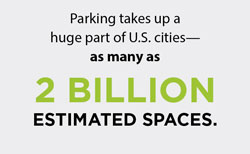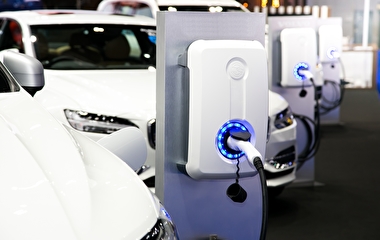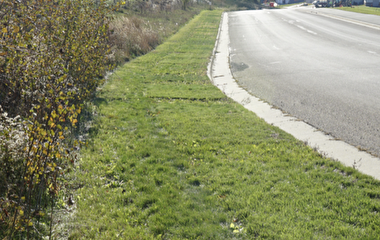Photo: Shutterstock
Today’s cities have at least one thing in common: they all grapple with managing the challenges of transportation, infrastructure financing, housing, and environmental sustainability. These complexities are compounded by rapidly changing modes of operation, new and disruptive technologies, and changing expectations and demands from citizens and businesses.
In the opening session of CTS’s 2016 Transportation Research Conference, Gabe Klein, author of Start-up City: Inspiring Private and Public Entrepreneurship, Getting Projects Done, and Having Fun, discussed the innovations taking place in our cities and examined how government, business, and nonprofit leaders can work together to use this wave of change and shape a better quality of life for the future.
Klein believes one of the keys to creating the cities of the future is looking to the past. “At the turn of the century people ruled the streets—they got everywhere by walking, biking, or taking streetcars,” he said. “It was only about 75 years ago that we built the [interstate] highway system, and not everyone benefitted. We built highways through neighborhoods and shut down the streetcars, which created a situation where more-affluent people left our cities for the suburbs and a way of life that revolves around consumption.”
According to Klein, history is coming full circle and we are starting the return to an era of “people first” streets and collaborative consumption. “We can only fit so many cars on our roads, and cars change the economics of how people live,” Klein said. “People are finally figuring out this equation, and we are seeing the rise of ride-sharing and bike-sharing services, light rail, transit-oriented development, and ‘complete street’ design in our cities.”
City leaders are also starting to take note of the popularity of these types of projects. “We used to focus solely on throughput and safety, but people tend to take these things for granted,” Klein said. “Leading transportation departments, I’ve seen that relatively inexpensive bike-sharing and bike-path projects generate much more excitement than big, expensive bridge and highway projects.”
Moving forward, Klein said our goals need to shift to access, mobility, multimodal transportation, environmental quality, and livability. “We’ve seen that transit-oriented development works, and we need to get back to that model,” Klein said. “Let’s organize services around active and shared transportation with links to other cities and rethink what transit is—other types of transit are emerging quickly, such as a car that can operate as a transit vehicle.”
Revamping parking in our cities is a promising starting point. “In the future, you won’t be able to drive your car into cities—roads will become active and shared transportation lanes and all those parking spaces can be repurposed for other uses such as affordable housing,” Klein said.
Finally, Klein emphasized that U.S. government agencies need to move beyond the idea that all transit and transportation systems must be run by the public sector and embrace the public-private partnership models that have been used successfully in other parts of the world. “We need to align our incentives and investment and create true partnerships between the public and the private,” Klein said. “For example, Hong Kong’s transportation is run by the private sector, and it is one of the best transportation systems in the world. We need to study that example and others like it in Europe and Asia if we want to make sure transit is a crucial part of our future.”




